Rose hips are the fruit of the rose, and are produced at the end of the growing season. Contained within the rose hips are the seeds and the fruit, the latter of which has both culinary and therapeutic uses. Learn how to harvest rose hips, and enjoy this wonderful bounty from your rose bushes.
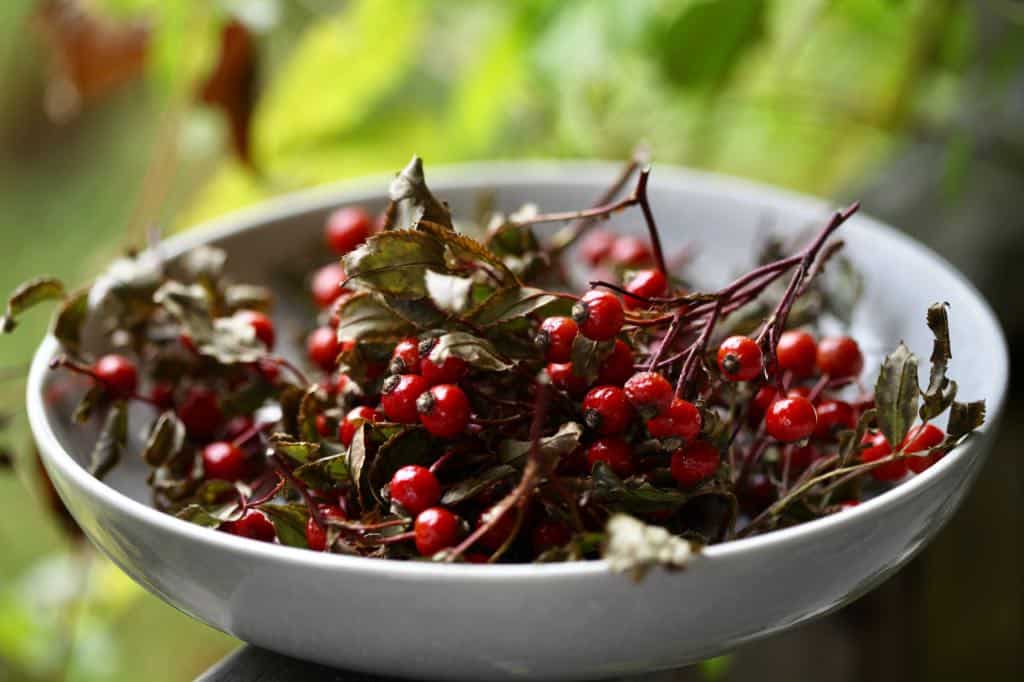
This past summer I patiently waited for the rose hips to mature. The best time to harvest the fruit is in late fall, after they have matured on the bush.
We have a few rose bushes at the farm, many from generations past that still grow in the garden. These old fashioned roses are peppered with rose hips in September and October, and they are some of the first to produce harvestable fruit.
There are also many wild rose bushes around the property, all which add much beauty to the landscape. The wild rose hips are smaller, although they are plentiful, and taste delicious.

The bright red fruit against the bushes are ornamental, and last throughout the fall to decorate the bush.
My climbing rose hips are often not ready to pick until later in October. The reason for this is that they bloom throughout the season, and the later blooming roses will produce fruit later in the season.
My intention this season was to use the seeds from the rose hips for growing, and as well to use some of the rose hips to make syrup, rosehip jam and jelly.
I also planned to dry some rose hips for rosehip tea.

How To Harvest Rose Hips
Rose hips can be harvested in fall, after they mature on the bush. Many who gather rose hips for culinary use will wait until the frosts arrive, which can add sweetness to the fruit. Harvest with a pair of sharp clean scissors or snips, and be careful of the thorns on the bush, as you harvest the rose hips from the branches.
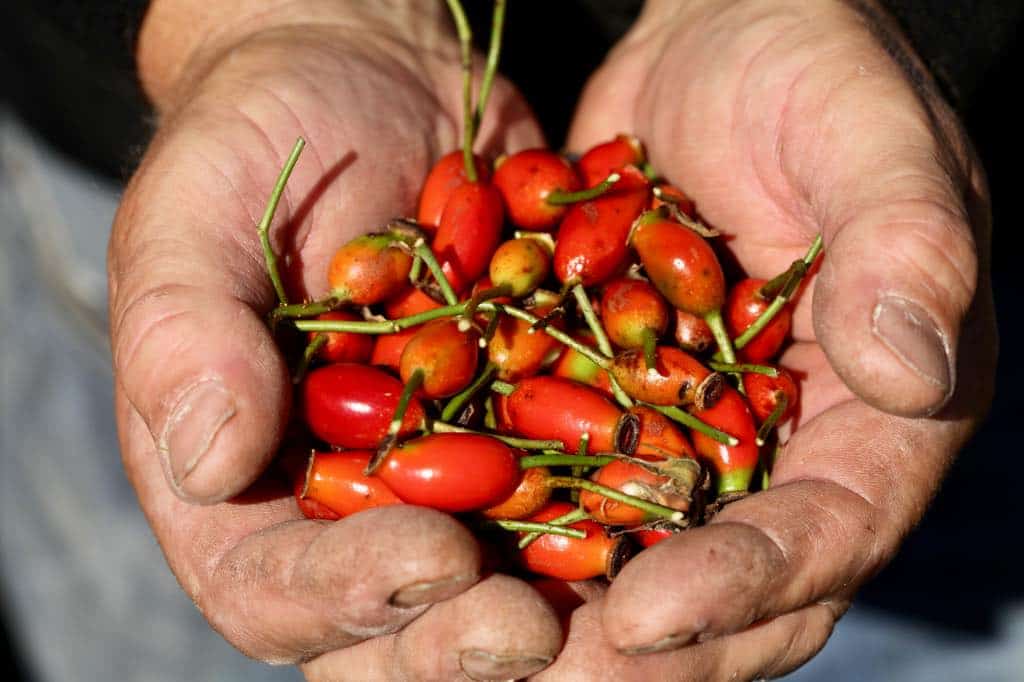
Where To Pick Rose Hips
If you are harvesting rose hips for culinary or cosmetic use, it is important to harvest from organic bushes.
If you know that the roses are organic and haven't been sprayed by chemicals, then you may be good to go for harvesting.
Consider your environment however, and who may be on adjacent properties.
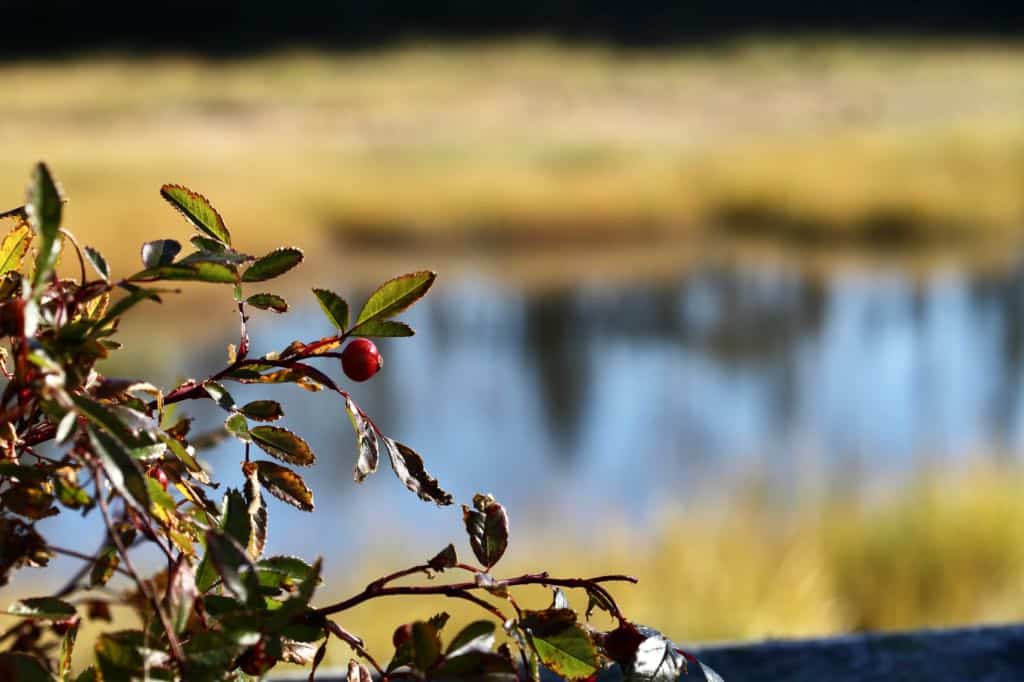
Our neighbour in town lives uphill, and treats his yard regularly with herbicides. I never harvest anything edible from our property as a result, unless of course it's for other uses, such as seed collection or the vase.
The farm property is totally organic, with organic properties surrounding. I still however am cautious of roadside bushes, and will not harvest edibles if they are growing close to the road.
Runoff from the roadways has the risk of carrying contaminants. Avoid roadside foraging from major roadways if at all possible, for this reason.

When To Pick Rose Hips
Rose hips form after the roses have been pollinated by the bees and other pollinator insects.
The fruit are slow to mature, or so it seems, especially while you are waiting to harvest them.
Harvest rose hips when they have turned from a green color when just forming, to a bright red or orange color on the bush.
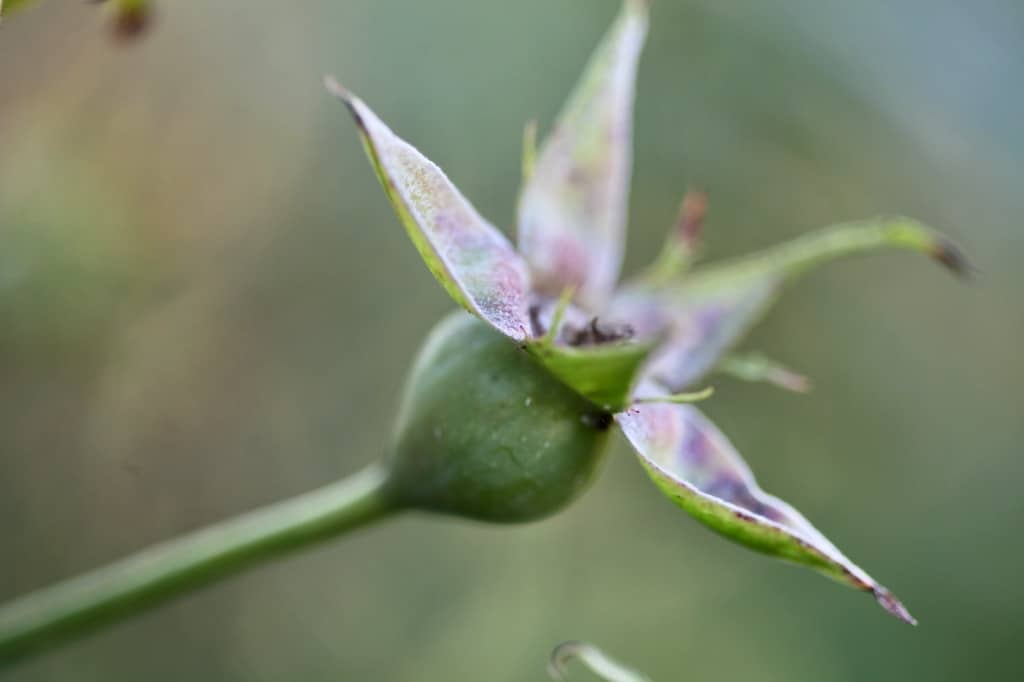
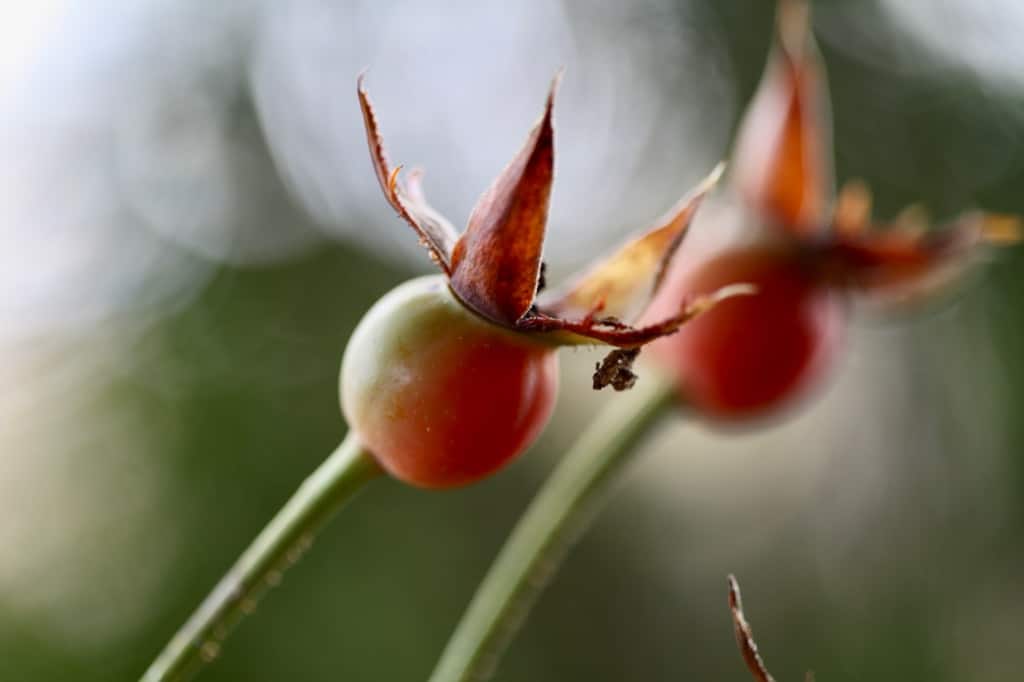
There are many different types of roses, and bloom time is dependent on variety.
Rose hip formation is dependent on bloom time, and occurs only when the roses have been fertilized to produce a seed pod.
Roses which bloomed in June will have an earlier rose hip harvest, as those which bloomed in July or August, because those rose hips are later forming.
Some of the later formed seed pods on my climbing roses, which bloomed in September, remain green, even in mid October. This is because they bloomed later, so are therefore later to mature.
The later forming rose hips have not yet become mature on the plant. Hopefully they will have time to turn red before we have a killing frost.
Many foragers wait until the first frost to gather their ripe rose hips.
Be careful in waiting too long however, as a hard frost can injure the fruit, making them no longer harvestable.
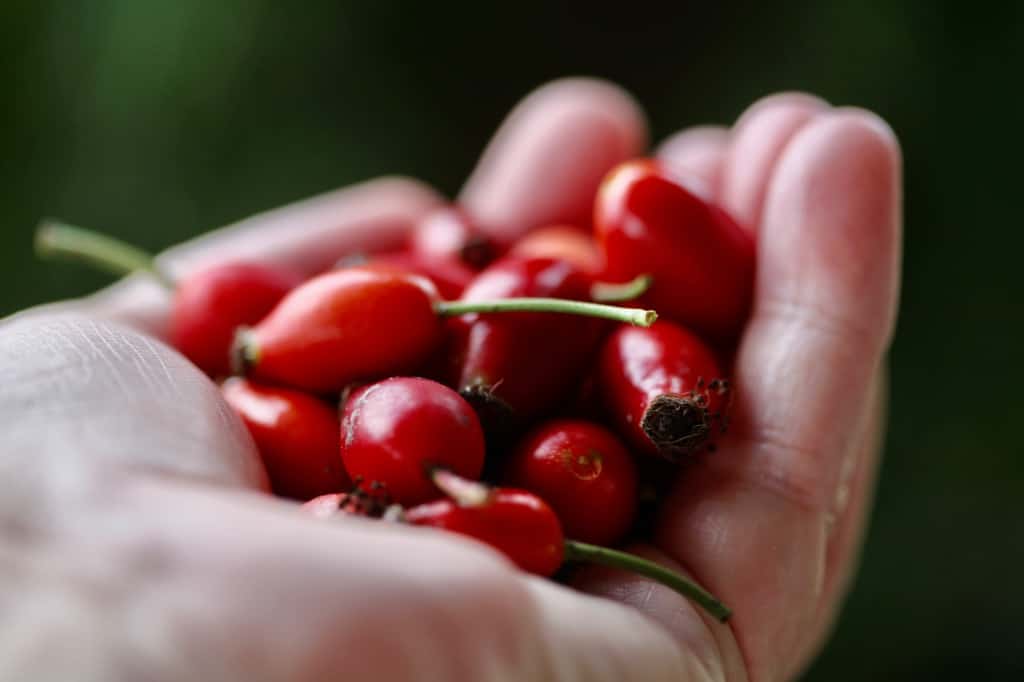
How To Pick Rose Hips
I often wait until after the first few frosts before picking the rose hips. This is generally because my own rose hips tend to mature late, and also to add sweetness to the fruit.
When your rose hips are prime for the picking, head out to the bush with a bowl or basket, and a sharp pair of scissors or snips.
Make sure to wear long sleeves to help prevent scratches from the rose thorns on the bushes.
You can also just use your fingers to pick the rose hips from the plant. They are fairly easy to pluck from the bush with a gentle tug.
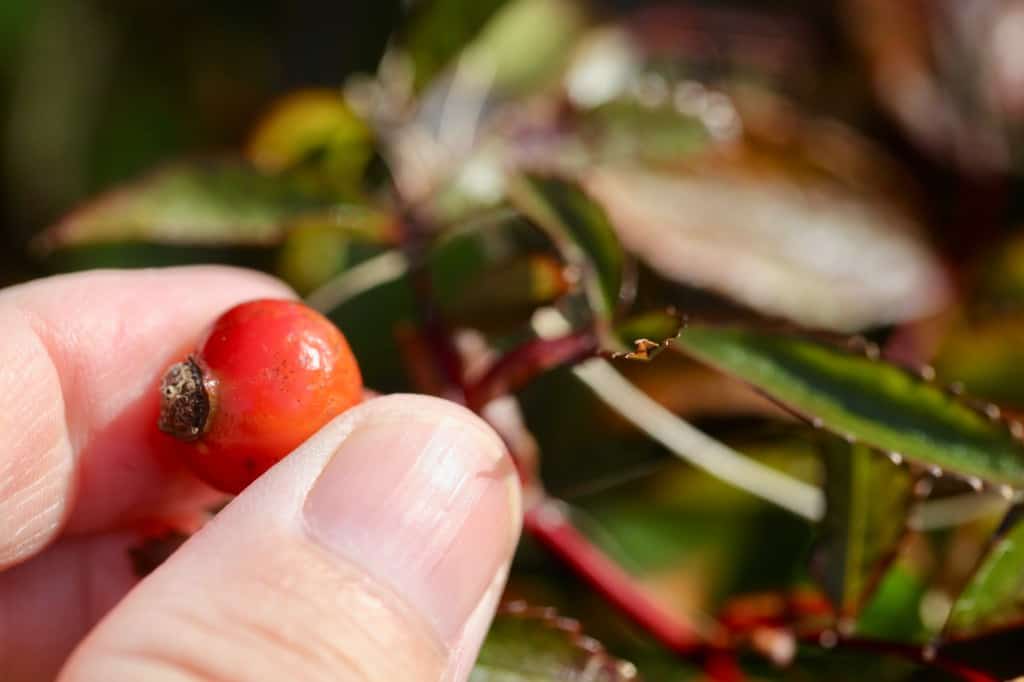

I generally pick them with the tiny stem attached. This stem will later be removed when processing the harvest.
Pick the rose hips that look healthy and ripe. Leave behind any that are shrivelled, damaged, or past their prime.
The rose hips left behind on the bush will be a tasty treat for the wild birds and other wildlife, when the food is scarce in the winter months.
Remember, not all rose hips will mature at the same time, and some may be past their prime.
Gather the amount you will need from the bush, and make sure to leave a few behind for the wildlife.
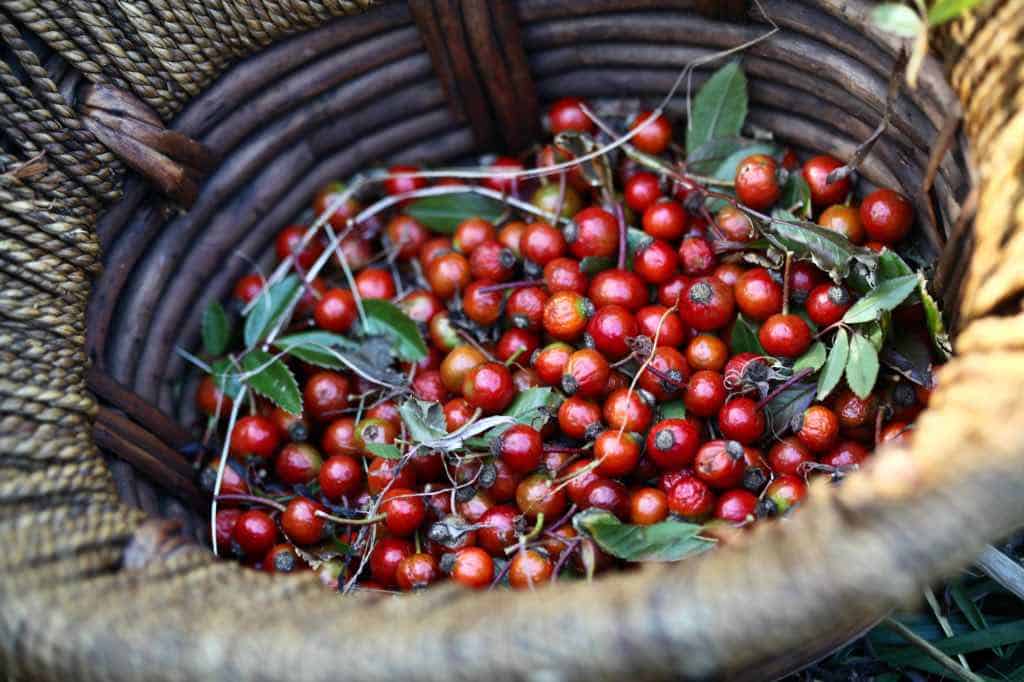
How To Eat Rose Hips
Rose hips contain the seeds of the rose, which are wrapped in tiny hairs, which can be sharp and irritating if consumed.
It is only the skin and thin layer of fruit on the outside of the rose hips which is eaten.
There are certain ways to process rose hips to make them more easily edible, and to avoid consuming the irritating hairs.
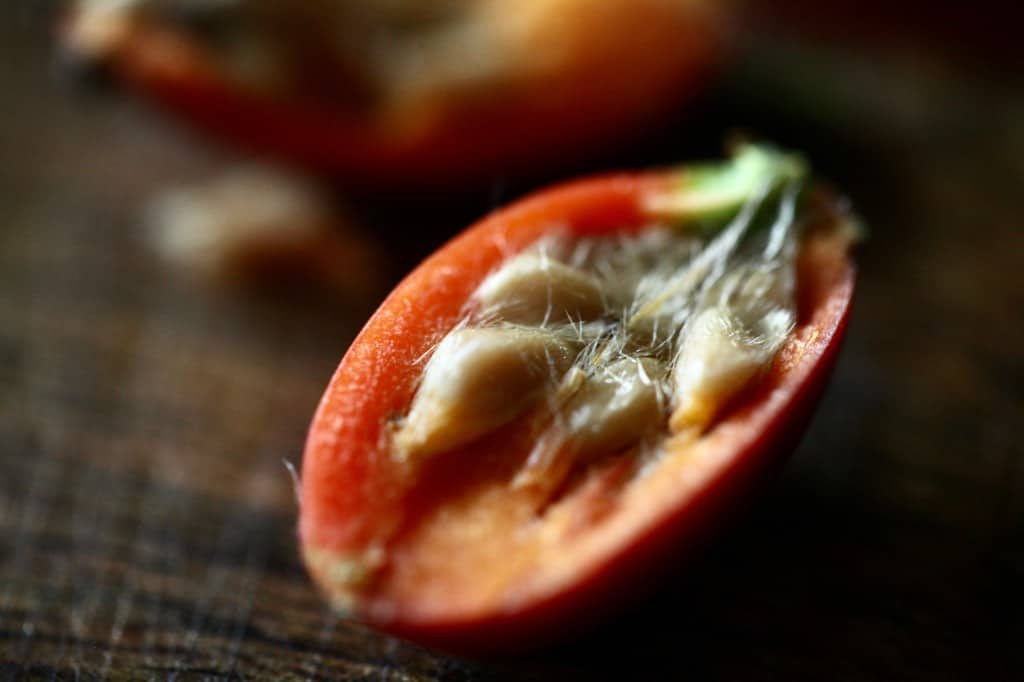
Can You Eat Raw Rose Hips?
If the rose hips are large, and you can nibble just a bit of the outside fruit without getting to the inside cavity, then possibly.
However, it is not advisable to eat raw rose hips straight off the bush, due to the irritating hairs inside.
The hairs can cause irritation internally when consumed, and it's best to remove them before eating the rose hips.
Rose hips should therefore be harvested and processed before eating, to remove the inner contents which are not edible, and make available the edible outside portion for use.
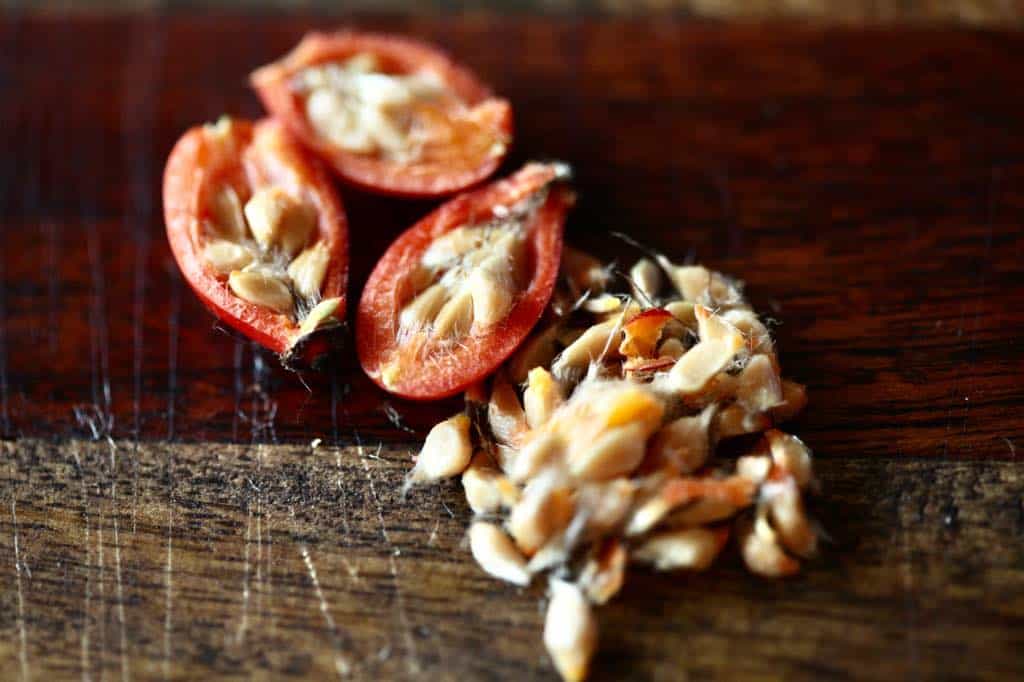
How To Prepare Rose Hips For Eating
There are a number of different ways that rose hips can be processed and eaten. Rose hips can be used in either fresh or dried states, depending on the recipe and intended culinary use.
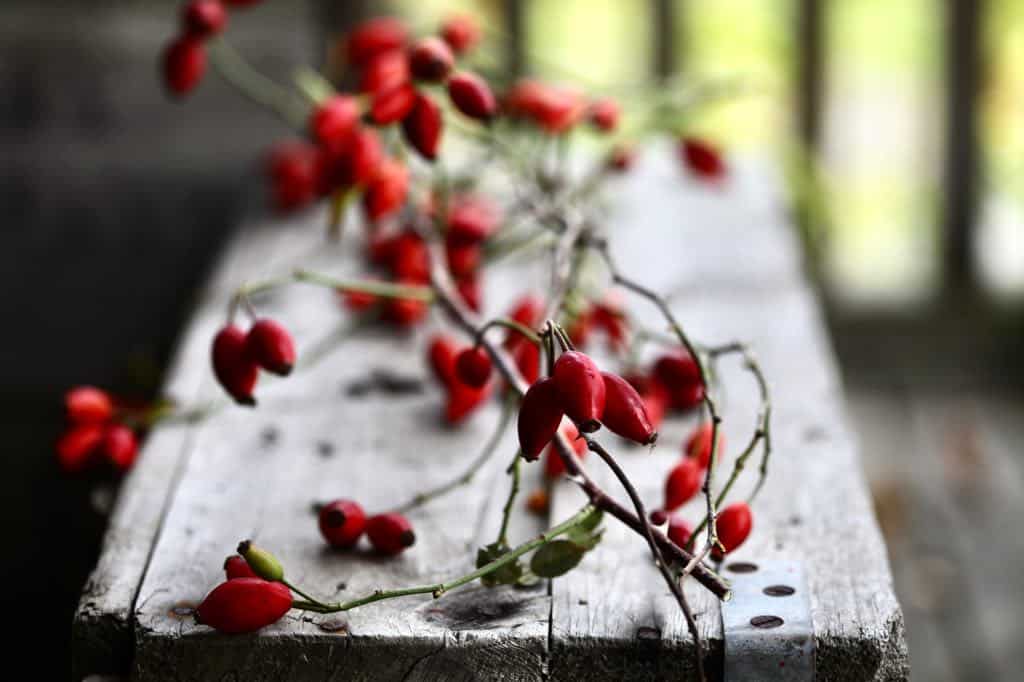
Prepare For Use In The Fresh State
- When rose hips are used in the fresh state straight from the garden, they are processed after they are cooked. This step will remove the irritating hairs and inedible parts.
- This process involves straining the fruit through layers of cheesecloth or muslin. This will remove the fruit and hairs, and strain out the juice, which is the ingredient which will be used.
- Double straining helps to produce a hair free juice, which can then be used to make different recipes.
- Juice from the fresh rosehips can then be used to make many different products, including rose hip syrup, jam, and jelly.
- The juice can also be frozen for later use, and stored in the freezer for up to a year. Make sure to label the storage date on the bag if freezing.

Prepare For Use In The Dried State
Dried rose hips can be dried in two ways:
- with the inner contents removed prior to drying
- or dried intact.
Removing The Hairs
- For dried rose hips, removal of the inside hairs can be part of the processing of the fruit, prior to storage.
- Before drying, the rose hips are washed and the stems are removed. Cut off the blossom end of the hips if you are cutting them in half.
- For larger rose hips you can cut the fruit in half and scoop out the inside contents. This is accomplished using a sharp tool such as a small spoon or a sharp knife.
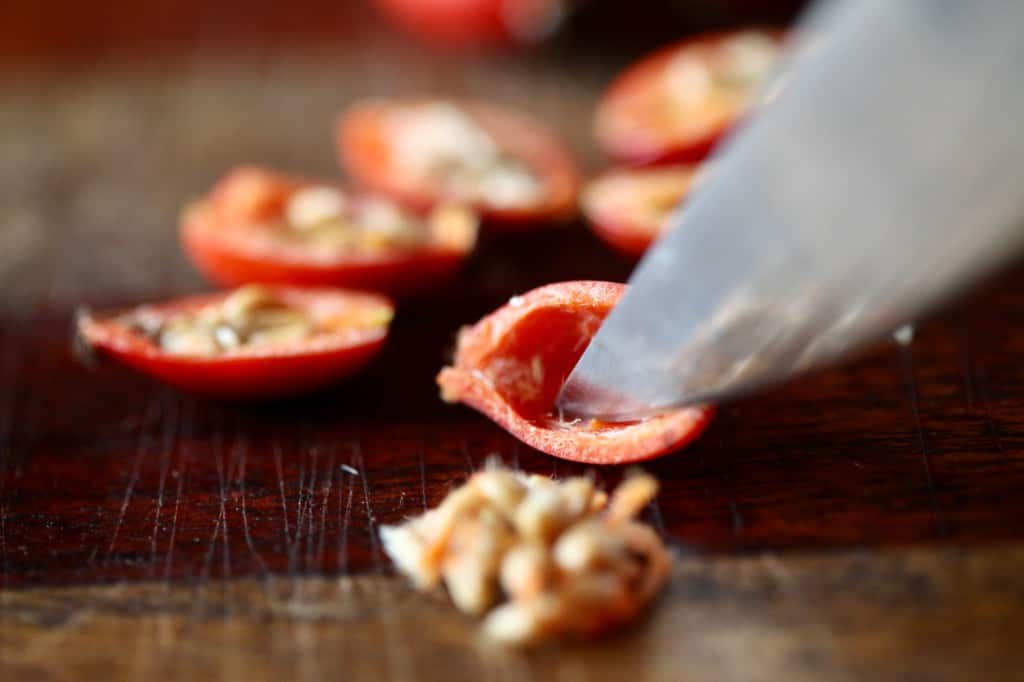
- This is a tedious process and can be very time consuming, depending on the number of rose hips to process.
- These processed fruit will dry more quickly than the whole rose hips.
- Dry in the oven on it's lowest setting, or in the food dehydrator on the fruit setting, until dried. Drying time is dependent on the size of the fruit.
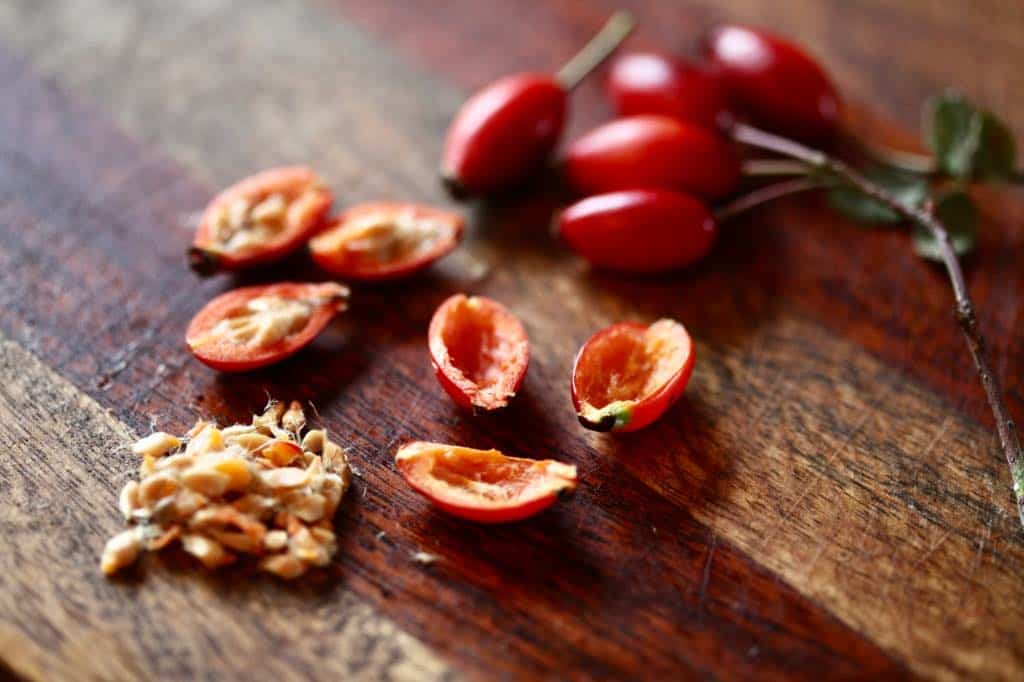
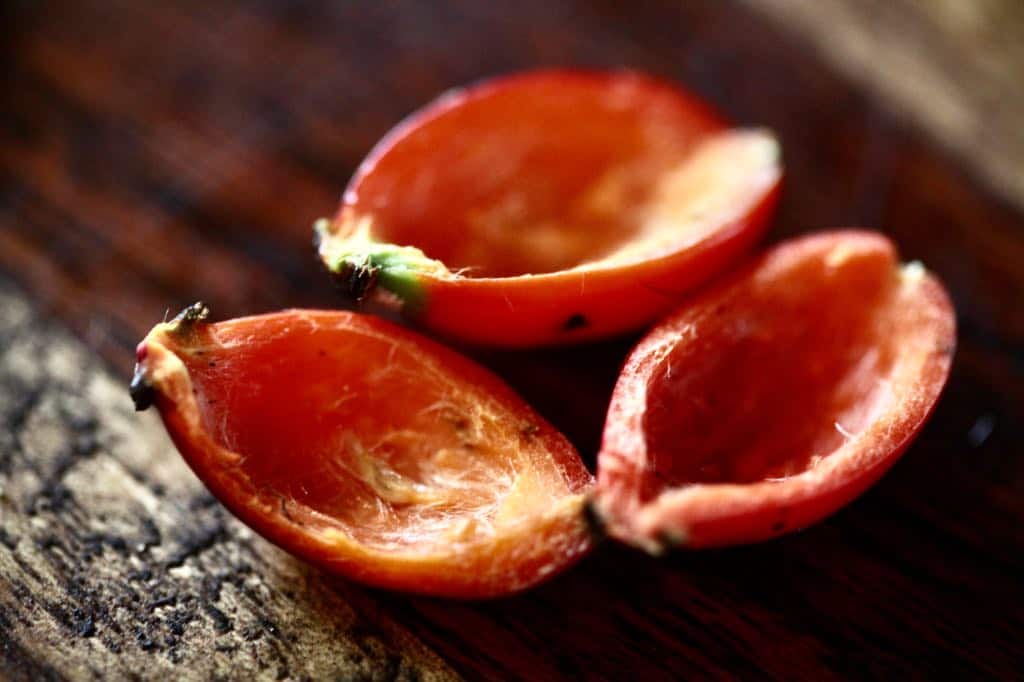
Drying Intact
- For smaller hips, removing the seeds and hairs just isn't possible, and therefore these fruit are dried whole.
- The intact hips are dried or dehydrated using a number of different methods. These different methods include drying in an oven, drying in a food dehydrator, and air drying.
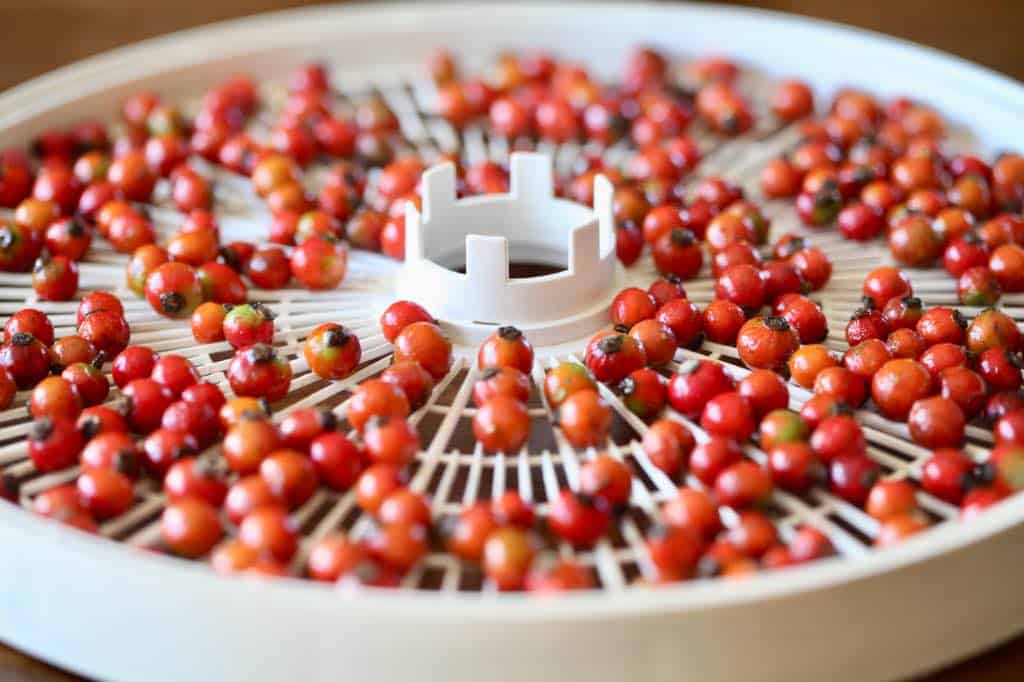
- Dry the rose hips in a single layer with each method, and dry on a low heat until the fruit are hard and dry.
For a more in-depth look at how to dry rose hips, you can find the details of the drying process in this blog post on drying rose hips for tea: How To Dry Rose Hips For Tea.

Processing The Dried Rose Hips
- Once completely dry, the rose hips that were dried whole are crushed, generally with a food processor or by using a mortar and pestle.
- The crushed pieces are then sifted to remove the fine hairs, separating them from the dried pieces of fruit and seeds.
- The dried rose hips can be stored, and then later used to make different recipes calling for dried hips.
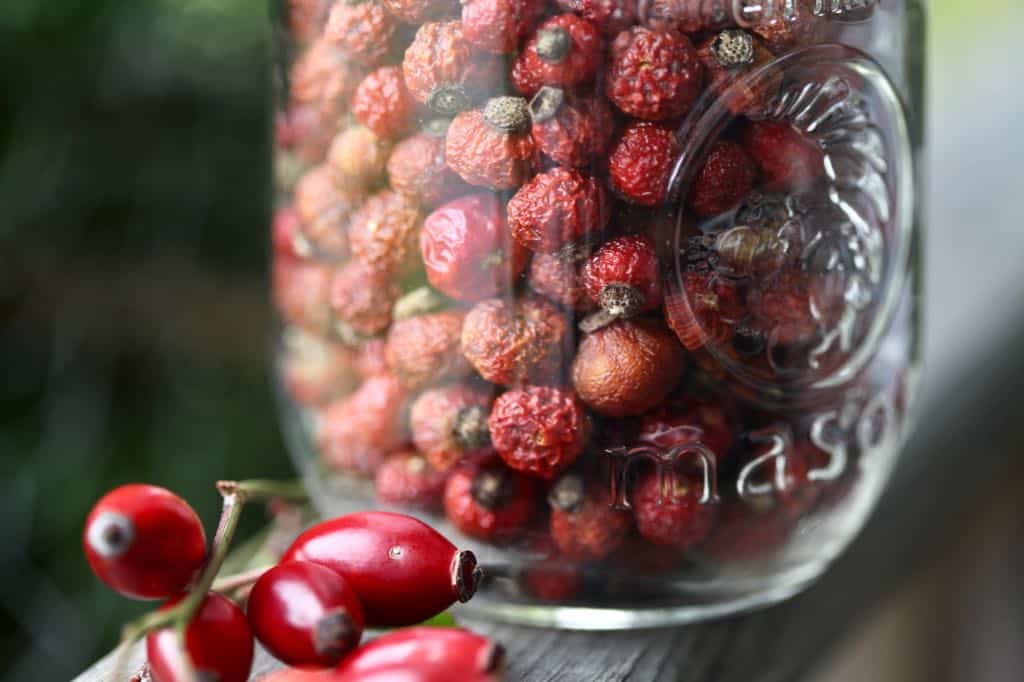
Rose Hip Storage
- Store freshly picked rose hips in a cool location until they can be used or dried.
- Rose hips tend to shrivel fairly quickly, and within several days from harvest show evidence of wrinkling and drying.
- Keeping them in a cool location such as the fridge will help to keep them plump and firm for longer.
- Dried rosehips can be stored in an air tight container, such as a glass jar or a mason jar with an airtight lid.
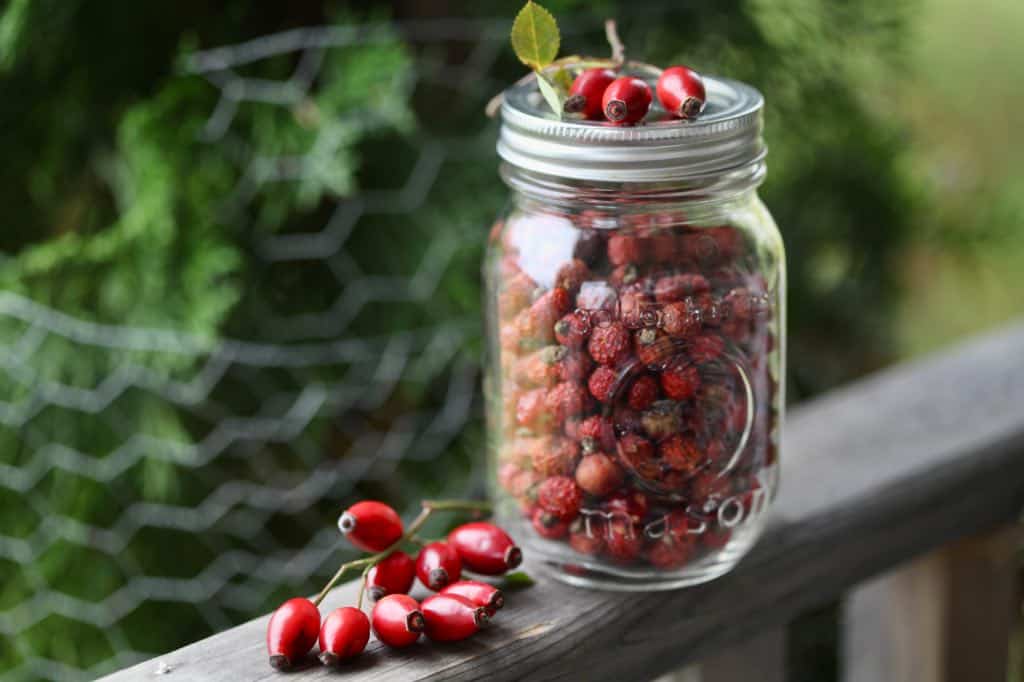
How To Use Rose Hips
Rose hips have been harvested throughout the ages, and used in many different ways for their beneficial properties.
The hips have many uses, and can be dried or used fresh, right off the bush.
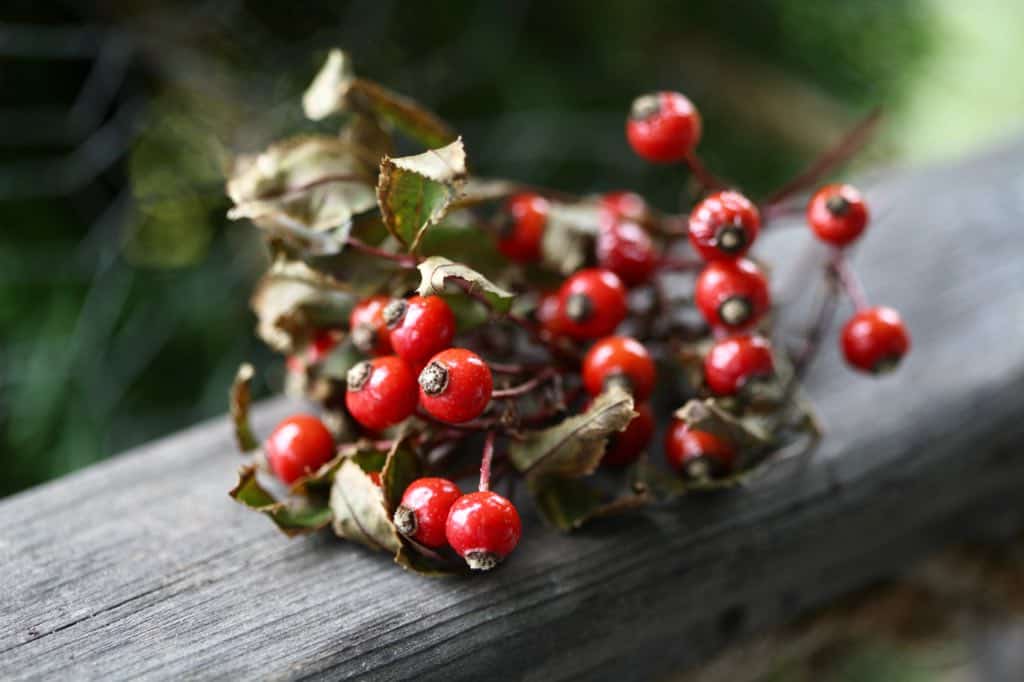
Medicinal Uses
Rose hips have been used in alternative medicine, and are reported to have therapeutic properties and health benefits.(source)
A fabulous source of vitamin C and natural antioxidants, rose hips have been used traditionally in therapeutic applications, and continue to be studied for new therapeutic uses.
The antioxidant properties in rose hips comes from the substances within the fruit, including vitamins C, E, and B, as well as polyphenols and carotenoids.

Culinary Uses
Rose hips can also be used in the kitchen as well, and have numerous culinary applications. They are tasty little morsels of goodness, and an often underused fruit from the garden.
Rose hips have been used throughout the ages for their nutritional value, and processed for the juices and fruit.
Rose hips have a slightly tart and fruity taste, and are similar to cranberry yet much more subtle.
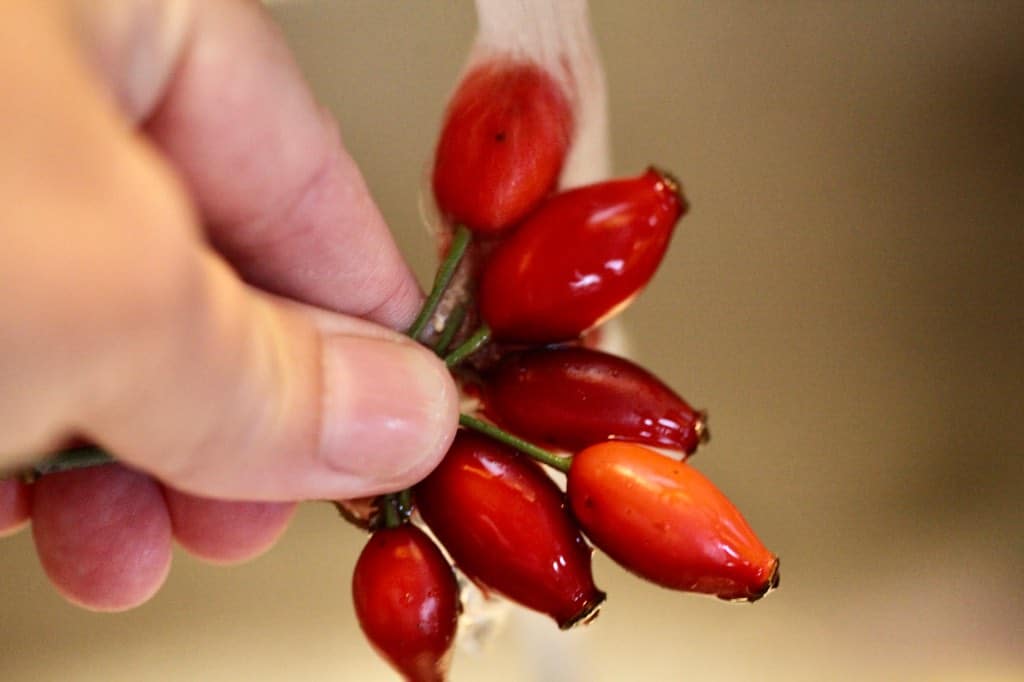
The fruit are high in vitamin C, and a wonderful addition to the pantry.
Highest vitamin C content is found in the fresh rose hips as compared to dry, as there is some vitamin C degradation which occurs when drying, depending on a number of different factors.
In the dried state the rose hips are preserved, and therefore used throughout the seasons. That is certainly one of the benefits of drying and preserving the fruit from the garden.
Dried rose hips can be added to many recipes, and be used as a delightful wild seasoning.
Fresh rose hips can also be used in the kitchen. Use them fresh from the bush to make rose hip syrup, rose hip jam, and rose hip jelly.
The rose hip syrup tastes delicious drizzled over a favourite ice cream.
Rose hips are also used to make soups and sauces, and of course rose hip tea.
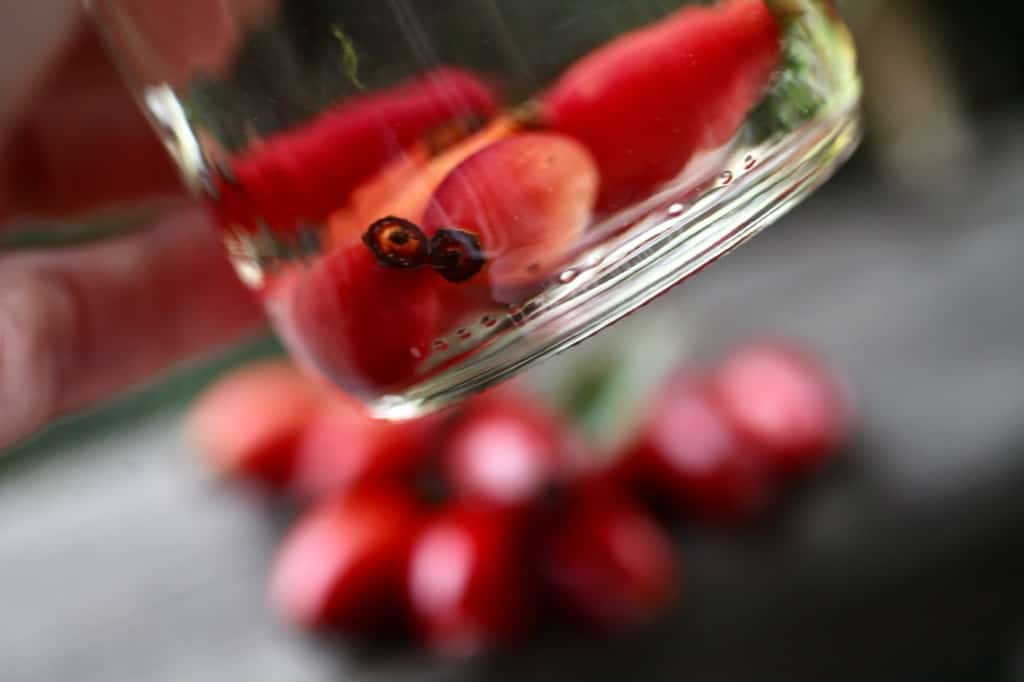
Rose Hip Tea
Rose hip tea is a popular drink, and can be made with both fresh as well as dried rose hips. Steeped into a soothing tea, it it not only tasty but healthy as well.
As with any dried herb or fruit, the amount of dried product for making tea is approximately half of the amount of the fresh.
Rose hip tea is made with one tablespoon full of dried rose hips per one cup of boiling water, or 4 to 8 fresh rose hips, depending on the size of the fruit. Infuse for 10 to 15 minutes for a delicious cup of tea.
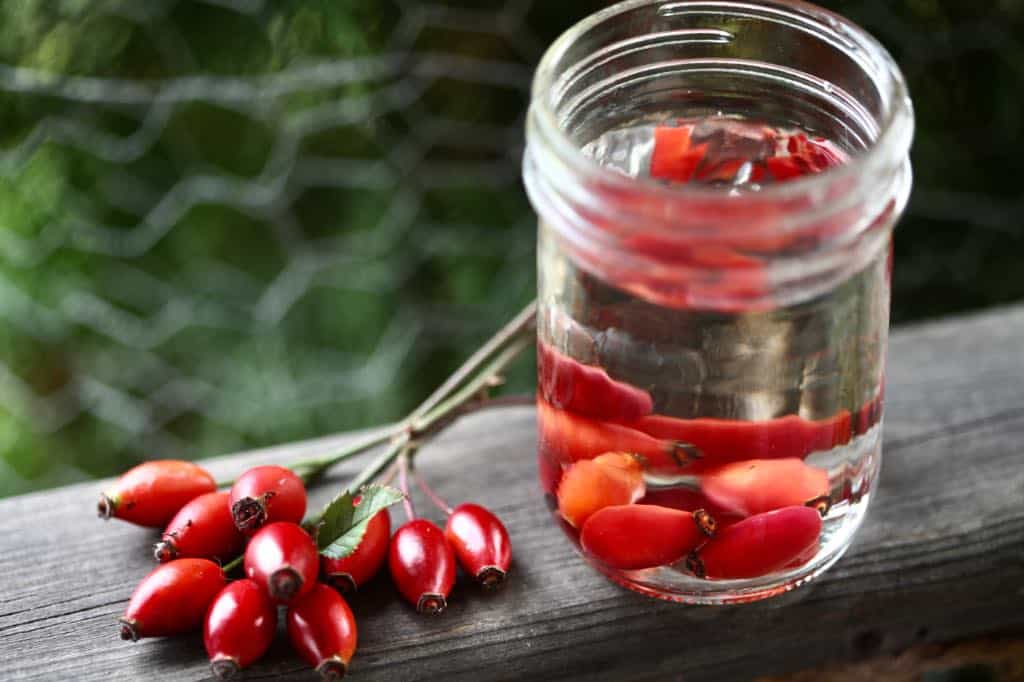
Cosmetic Uses
These delightful fruit of the rose have cosmetic uses as well.
Dried rose hips can be infused to make a rosehip oil.
The infused oil is full of the beneficial properties of rose hips, and can be used to make a soothing rose hip salve or lip balm.
The oil can also be combined with other beneficial oils, such as calendula oil, to make other variations of natural skin products.
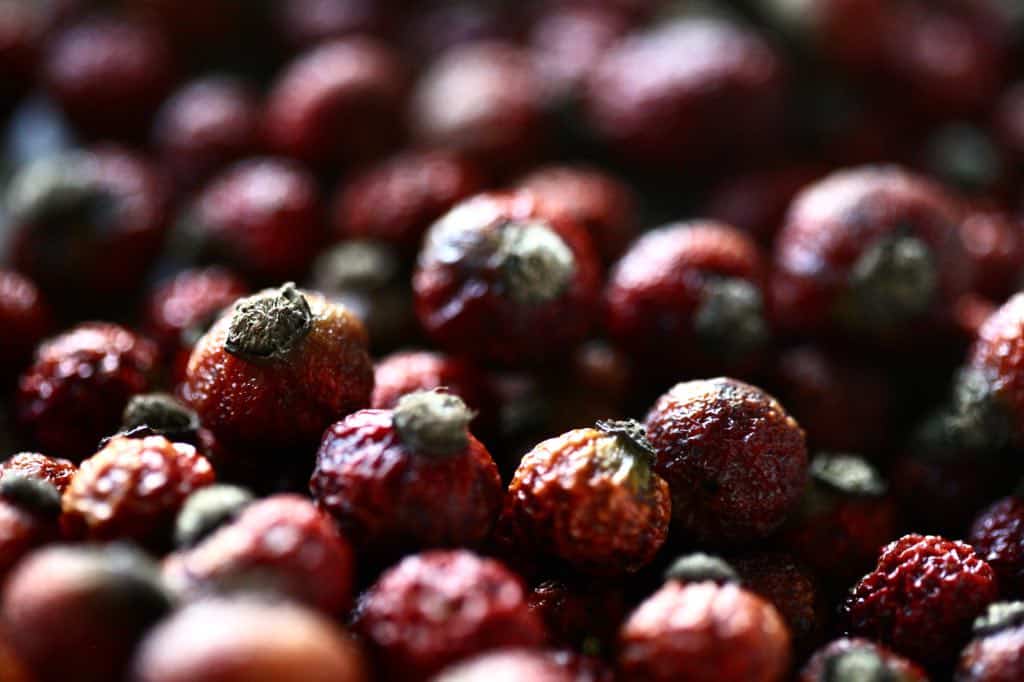
Harvesting Rose Seeds
Let's not forget the reason that the rose hips are produced by the plant in the first place.
Rose hips contain the seed of the rose, which can be collected and used to grow new rose bushes from seed.
Many roses are hybrids, and rose hips harvested from those hybrids for seeds will produce new hybrid roses. The resulting rose plants may not be like the parent however, because they are new hybrids, and are genetically different plants.
Rose seeds harvested from wild roses though will often produce plants similar to the parent plant.
Make sure to stratify the rose seeds before planting, to increase your chances of successful seed germination.
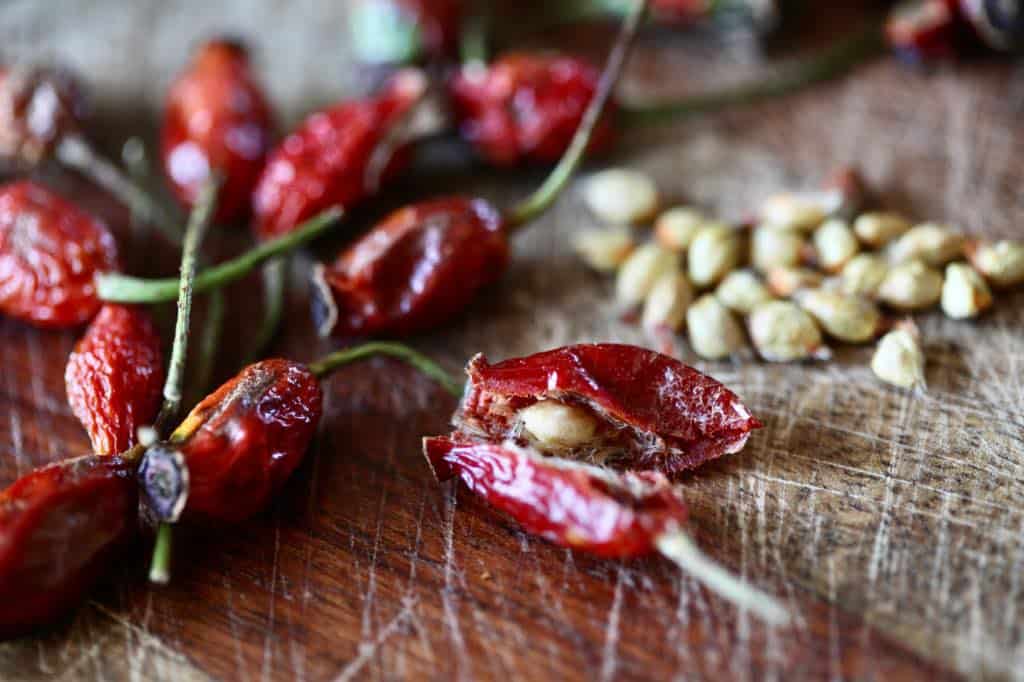
Decorating With Rose Hips
Rose hips are the perfect fruit to use to decorate an outdoor area with natural red fruit.
Unlike cranberries, which most often fall apart after several days in the outdoor elements, small red rose hips are perfect for adding to garlands and evergreen trimmings.
You can also add them to outdoor wreaths, and Christmas trees.
I have always added them to the fir garlands on the deck during the holiday season.
Just be careful of the thorns, and you will have a great display.
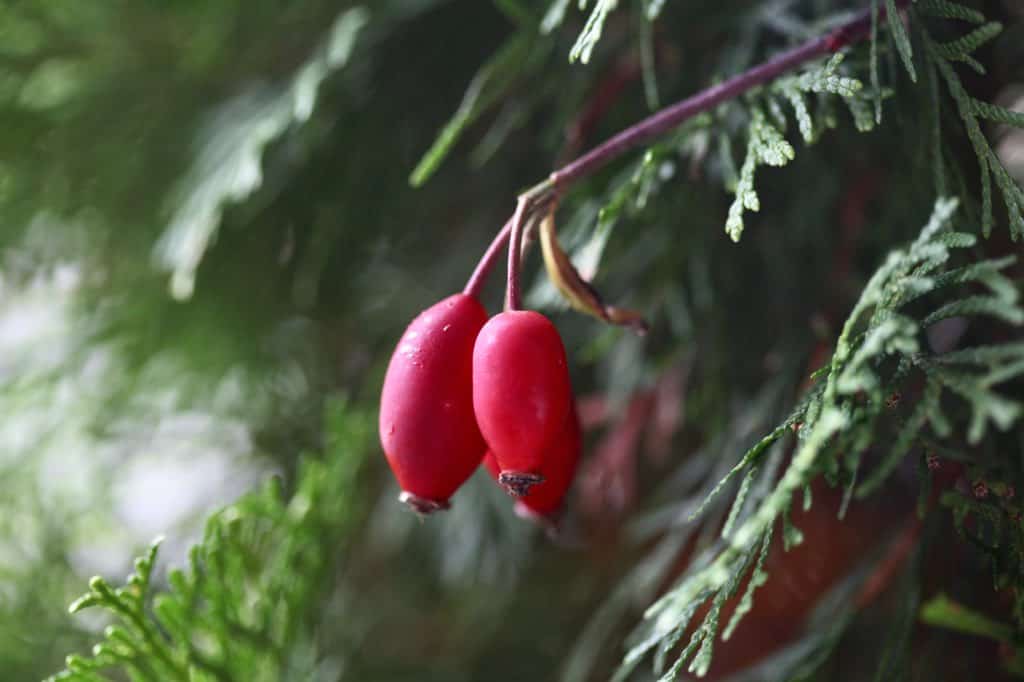
Conclusion
Rose hips are the fruit of the rose bush, and can be used in many beneficial ways each year at harvest time.
If you grow roses in your garden, or have access to patches of wild roses, consider harvesting some rose hips this fall, so that you can preserve and use them throughout the year.
The high vitamin c content of the fruit make them a fabulous fruit for harvesting and having on hand.
Rose hips have many different uses, and are easy to harvest, process, and store.
The list is long, and only limited by your imagination.

Have you ever harvested rose hips? Be sure to leave a comment below to share your experience!
Other Posts You May Like:
See the Web Story on Harvesting Rose Hips In Fall!
PIN IT FOR LATER!
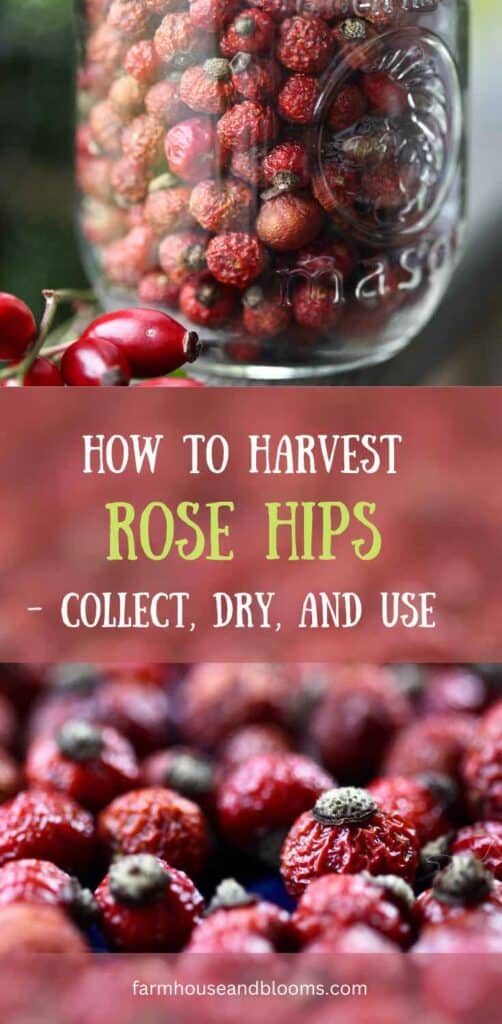







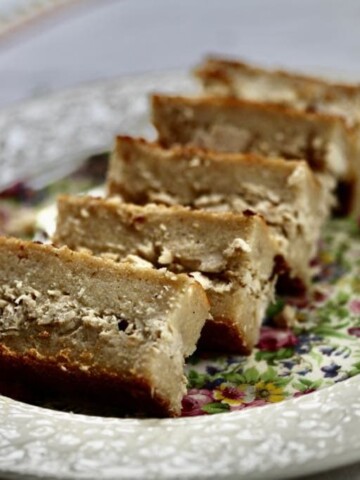
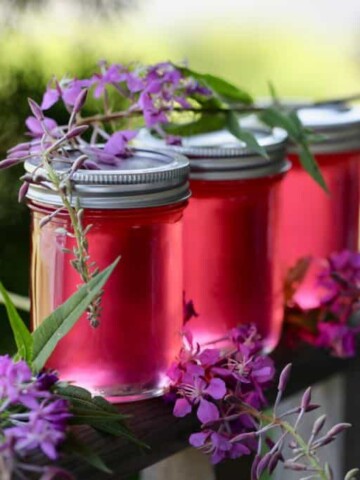
Leave a Reply